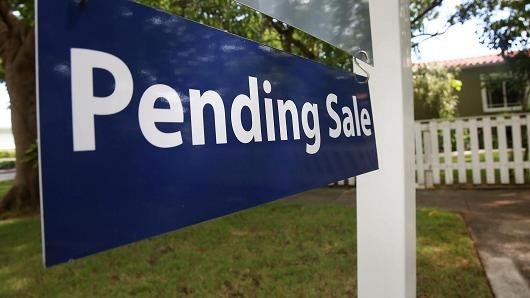Rising mortgage rates could mean even fewer homes for sale this spring

This year's spring housing market will be more competitive than ever.
However, for existing homes, there are 10 percent fewer homes for sale compared with a year ago.
Mortgage rates, which sat near record lows for the bulk of 2017, are suddenly rising.
A pending sale sign in front of a home in Miami.
There is still plenty of snow blanketing a wide swath of the nation's neighborhoods, but the spring housing market is just around the corner. This year, it will be more competitive than ever, with the supply of homes for sale at record lows and rising mortgage rates threatening to make the situation even worse.
President's Day is considered the start of the busiest season for housing, with big builders touting holiday sales to kick it off. Over in the existing home market, however, there is nothing to shout about.
There are 10 percent fewer homes for sale compared with a year ago, and in the hottest markets, where prices are appreciating fastest, there are up to 40 percent fewer homes for sale, according to Zillow. Low supply last year caused home prices, which were rising already, to accelerate, and that continues now. Prices are increasing far faster than incomes, even as the economy and employment improves.
Now mortgage rates, which sat near record lows for the bulk of 2017, are suddenly rising. The average rate on the popular 30-year fixed is up a quarter of a percentage point since the start of this year to around 4.25 percent, according to Mortgage News Daily. The expectation is that they will continue to move higher as the Federal Reserve raises rates and investors move away from the bond market. Mortgage rates loosely follow the yield on the U.S. 10-year Treasury.
Rising mortgage rates will make the market more competitive because they will decrease supply and increase demand. Potential sellers will not want to lose the record-low rates they locked in after the recession, so they will stay put. Potential buyers will want to move in faster before rates rise even more and price them out.
Homebuilders have been increasing production slowly, but they are nowhere close to meeting the growing demand.
"The market is starving for new homes, but it won't be easy for builders struggling with high and rising land, labor and lumber costs," said Aaron Terrazas, senior economist at Zillow. "Aging millennials and young families may be able to find more affordable new homes for sale this year, but they'll most likely be in further-flung suburbs with more grueling commutes to urban job centers."
Newly built homes are also more expensive than comparable existing homes, so higher mortgage rates may make them less attractive, especially to buyers on the margins or those who have more trouble qualifying for a mortgage.